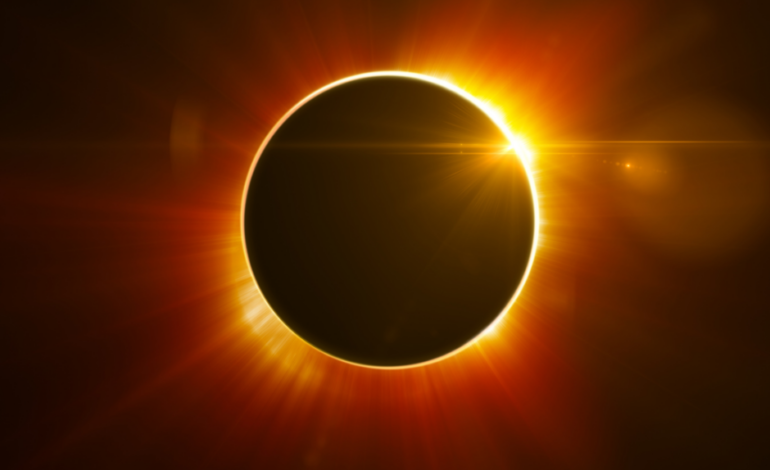Eclipse Introduction: What It Is and What To Expect by Addison Caddell

As we stand on the brink of a celestial spectacle, the upcoming solar eclipse promises to captivate sky gazers and stargazers alike. A rare alignment of celestial bodies, solar eclipses have been fascinating humans for centuries.
This awe-inspiring collection of the Earth, the Moon, and the Sun has been occurring since time immemorial. Ancient civilizations often regarded solar eclipses as divine messages or omens, attributing their occurrence to the gods. In China, it was believed that a celestial dragon devoured the Sun during an eclipse, while ancient Greeks saw it as a sign of impending doom.
A solar eclipse occurs when the Moon passes between the Earth and the Sun, casting its shadow on the Earth’s surface. There are three types of solar eclipses: total, partial, and annular. During a total solar eclipse, the Moon completely covers the Sun, turning day into night for a brief period. In a partial eclipse, only a portion of the Sun is obscured by the Moon, and in an annular eclipse, the Moon appears smaller than the Sun, creating a ring-like effect.
The upcoming solar eclipse promises a visual feast for sky enthusiasts. If you are fortunate enough to be in the path of totality, you will experience the breathtaking moment when the Sun is entirely covered by the Moon. The sky will darken, temperatures may drop, and the corona – the Sun’s outer atmosphere – will become visible, creating a mesmerizing halo effect around the obscured Sun.
Even if you are outside the path of totality, a partial eclipse still offers a remarkable celestial show. Observers will witness a portion of the Sun being obscured by the Moon, casting a unique and enchanting pattern of shadows on the Earth.
While solar eclipses are undoubtedly mesmerizing, it is crucial to prioritize safety during observation. Staring directly at the Sun, even during an eclipse, can cause severe eye damage. Special solar viewing glasses or solar filters for telescopes and cameras are essential to protect your eyes. Never use regular sunglasses, as they do not provide adequate protection.
The upcoming solar eclipse provides an opportunity to witness the harmonious interplay of celestial bodies, connecting us to the vastness of the universe. Whether you are planning to travel to the path of totality or observing a partial eclipse from your backyard, take the necessary precautions, and prepare to be awe-inspired by the celestial ballet unfolding in the sky. So, mark your calendars for April 8, 2024, gather your solar viewing gear, and get ready for a celestial experience that transcends time and connects us to the wonders of the cosmos.













